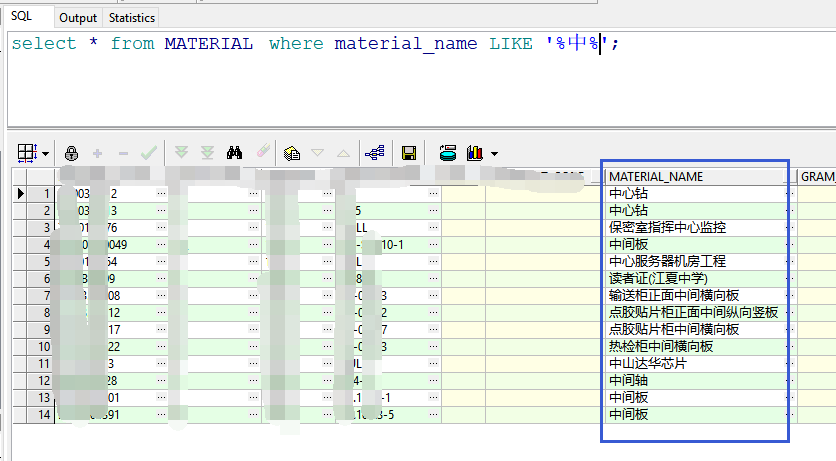1、instr()函数的格式 (俗称:字符查找函数)
格式一:instr( string1, string2 ) // instr(源字符串, 目标字符串)
格式二:instr( string1, string2 [, start_position [, nth_appearance ] ] ) // instr(源字符串, 目标字符串, 起始位置, 匹配序号)
解析:string2 的值要在string1中查找,是从start_position给出的数值(即:位置)开始在string1检索,检索第nth_appearance(几)次出现string2。
注:在Oracle/PLSQL中,instr函数返回要截取的字符串在源字符串中的位置。只检索一次,也就是说从字符的开始到字符的结尾就结束。
2、实例
格式一
select instr('helloworld','l') from dual; --返回结果:3 默认第一次出现“l”的位置
select instr('helloworld','lo') from dual; --返回结果:4 即“lo”同时(连续)出现,“l”的位置
select instr('helloworld','wo') from dual; --返回结果:6 即“w”开始出现的位置
格式二
select instr('helloworld','l',2,2) from dual; --返回结果:4 也就是说:在"helloworld"的第2(e)号位置开始,查找第二次出现的“l”的位置
select instr('helloworld','l',3,2) from dual; --返回结果:4 也就是说:在"helloworld"的第3(l)号位置开始,查找第二次出现的“l”的位置
select instr('helloworld','l',4,2) from dual; --返回结果:9 也就是说:在"helloworld"的第4(l)号位置开始,查找第二次出现的“l”的位置
select instr('helloworld','l',-1,1) from dual; --返回结果:9 也就是说:在"helloworld"的倒数第1(d)号位置开始,往回查找第一次出现的“l”的位置
select instr('helloworld','l',-2,2) from dual; --返回结果:4 也就是说:在"helloworld"的倒数第2(l)号位置开始,往回查找第二次出现的“l”的位置
select instr('helloworld','l',2,3) from dual; --返回结果:9 也就是说:在"helloworld"的第2(e)号位置开始,查找第三次出现的“l”的位置
select instr('helloworld','l',-2,3) from dual; --返回结果:3 也就是说:在"helloworld"的倒数第2(l)号位置开始,往回查找第三次出现的“l”的位置
注:MySQL中的模糊查询 like 和 Oracle中的 instr() 函数有同样的查询效果; 如下所示:
MySQL: select * from tableName where name like '%helloworld%'; Oracle:select * from tableName where instr(name,'helloworld')>0; --这两条语句的效果是一样的
3、实例截图
1、
2、
3、
4、
5、
6、
7、
8、
9、
以上就是本文的全部内容,希望对大家的学习有所帮助,也希望大家多多支持我们。
版权声明:本文内容由互联网用户自发贡献,该文观点仅代表作者本人。本站仅提供信息存储空间服务,不拥有所有权,不承担相关法律责任。如发现本站有涉嫌侵权/违法违规的内容, 请发送邮件至 举报,一经查实,本站将立刻删除。
如需转载请保留出处:https://bianchenghao.cn/39940.html











